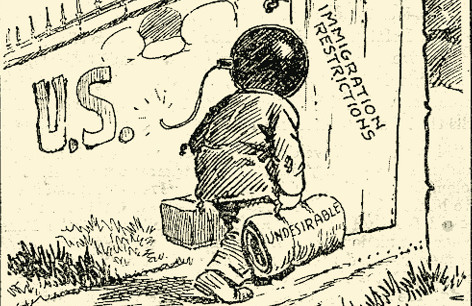




The Effect of Geography on Attitudes Toward Latinos
The Effect of Geography on Group Threat Theory and Attitudes toward Latin American Immigrants
This secondary analysis examined group threat theory by looking at the relationship between the perceived number of immigrants in a particular area and the prejudicial attitudes toward Latin American immigrants. Traditionally, group threat theory has been shown to have an effect on attitudes toward Blacks but not toward Latinos. Findings from this study indicate that estimating high numbers of immigrants is not a reliable predictor of strong prejudicial attitudes toward Latin American immigrants. However, predictions of higher numbers of immigrants do appear to vary significantly by geography, suggesting that Latinos are impacted by group threat theory but have been overlooked because of a national sample that was suppressing the relationship.

Testing Group Threat Theory and the Contact Hypothesis on Asian Immigrants
This secondary analysis examined attitudes toward immigrants by looking at group threat theory, which tests the relationship between the perceived number of immigrants in a particular area and the prejudicial attitudes toward Asian immigrants. We also examined the contact hypothesis, which suggests that the more interaction between groups the lower the levels of prejudice, as it relates to Asian immigrants. Traditionally, group threat theory has been shown to have an effect on attitudes toward Blacks but not toward Latinos or Asians.
Findings from this study support the contact hypothesis as it applies to Asian immigrants. Findings of this study also confirm that larger estimates of immigrants do not predict strong prejudicial attitudes toward Asian immigrants, suggesting that Asian immigrants occupy a unique position that challenges the racial ordering hierarchy.
Co-author: Yeon Kyeong Kim, University of Iowa
Testing Group Threat Theory on Asian and Latino Immigrants
This secondary analysis examined group threat theory by looking at the relationship between the perceived number of immigrants in a particular area and the prejudicial attitudes toward Latin American immigrants. Traditionally, group threat theory has been shown to have an effect on attitudes toward Blacks but not toward Latino/as. Findings from this study indicate that estimating high numbers of immigrants is not a reliable predictor of strong prejudicial attitudes toward Latin American immigrants. However, predictions of higher numbers of immigrants do appear to vary significantly by geography, suggesting that Latino/as are impacted by group threat theory but have been overlooked due to national sampling suppressing the relationship.